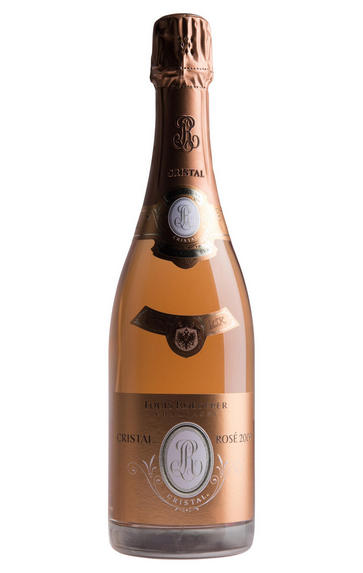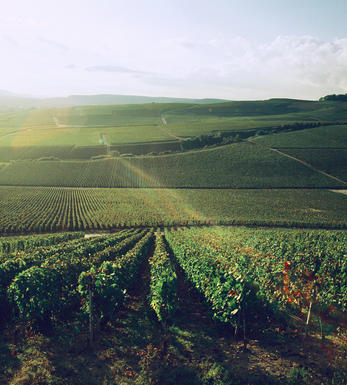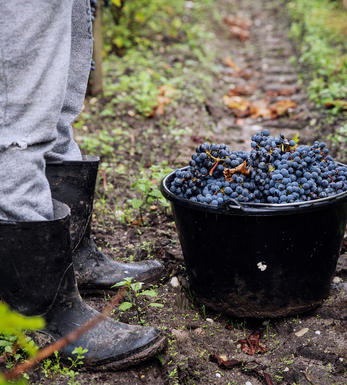
2008 Champagne Louis Roederer, Cristal Rosé, Brut

Critics reviews
Stephan Reinhardt - 18/06/2018
About this WINE

Louis Roederer
Founded in 1776, Louis Roederer is a family-owned, independent Champagne house with a well-deserved reputation for quality. It is managed by Frédéric Rouzaud, the seventh generation to be at the helm.
In 1876, Louis Roederer created the now-famous Cristal at the request of Alexander II. This once intensely sweet wine is now one of the most luscious, deeply flavoured champagnes available, with the '88, '89 and '90 among the greatest Cristals ever released.
Louis Roederer’s best-selling non-vintage blend for almost 40 years, Brut Premier, has recently been replaced by Collection 242. This new multi-vintage blend was created by Chef du Caves Jean-Baptiste Lécaillon in response to increasingly warm vintages. The cuvée aims to capture freshness and is based on a perpetual reserve which focuses on acidity and minerality.

Rosé Champagne
Rosé wines are produced by leaving the juice of red grapes to macerate on their skins for a brief time to extract pigments (natural colourings). However, Rosé Champagne is notable in that it is produced by the addition of a small percentage of red wine – usually Pinot Noir from the village of Bouzy – during blending.
Recommended Producers : Billecart Salmon (Elizabeth Salmon Rose), Ruinart

Champagne blend
Which grapes are included in the blend, and their proportion, is one of the key factors determining the style of most Champagnes. Three grapes are used - Pinot Noir, Chardonnay and Pinot Meunier.
26% of vineyards in Champagne are planted with Chardonnay and it performs best on the Côtes des Blancs and on the chalk slopes south of Epernay. It is relatively simple to grow, although it buds early and thus is susceptible to spring frosts. It produces lighter, fresher wines than those from Burgundy and gives finesse, fruit and elegance to the final blend. It is the sole grape in Blancs de Blancs, which are some of the richest long-lived Champagnes produced.
Pinot Noir accounts for nearly 40% of the plantings in Champagne and lies at the heart of most blends - it gives Champagne its body, structure, strength and grip. It is planted across Champagne and particularly so in the southern Aube district.
The final component is Pinot Meunier and this constitutes nearly 35% of the plantings. Its durability and resistance to spring frosts make the Marne Valley, a notorious frost pocket, its natural home. It ripens well in poor years and produces a soft, fruity style of wine that is ideal for blending with the more assertive flavours of Pinot Noir. Producers allege that Pinot Meunier lacks ageing potential, but this does not deter Krug from including around 15% of it in their final blends.


Buying options
Add to wishlist
Description
Roederer's 2008 Cristal Ros is a pure but textured, perfectly ripe, round, luscious and mouth-filling Champagne with power and concentration as well as a crystalline, elegant precision and stunning, citrusy freshness. Sourced in four biodynamically farmed plots in A (two vineyards with old-vines Pinot Noir on calcareous clay soils that can give exceptional ripeness but also crystalline freshness), Avize and Mesnil (one-third), the 2008 is a blend of 55% to 57% Pinot Noir and 43% to 45% Chardonnay and was fermented partly (15%) in large oak casks, with 16% having undergone malolactic fermentation. The unique light peach to pink-salmon color as well as the combination of juicy ripeness and great freshness is the result of infusion, a vinification method practiced at Roederer since 1974 to combine finesse and mineralization with depth and ripeness. Cristal Ros is produced with the saigne process after a cold maceration of seven to ten days and, after being blended with Chardonnay, is fermented like a dry wine. The delicate and subtle bouquet of the 2008 Cristal Ros is intense and fruity, intertwining red berry and sweet cherry aromas with floral flavors and a touch of caramel and nuts. On the palate, the 2008 is very elegant, fine, pure, precise and fresh but nevertheless dense, intense and fleshy, with lots of powdery chalk and a pure, very fresh, chalky-salty finish with zesty citrus flavors. The 2008 should have enormous aging potential. The Ros was disgorged in March 2017, and the dosage is eight grams per liter. Tasted at the domaine in May 2018.
Stephan Reinhardt - 18/06/2018
wine at a glance
Delivery and quality guarantee